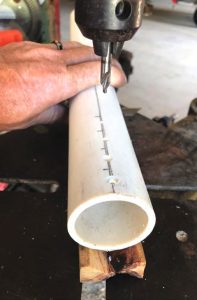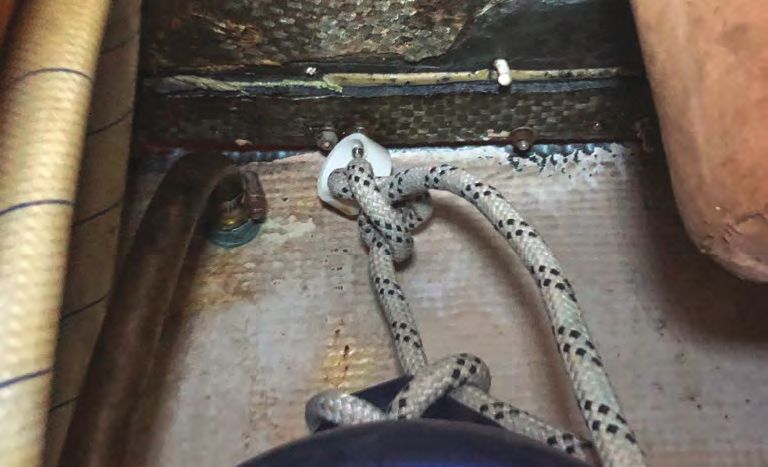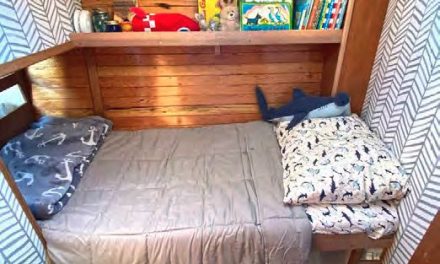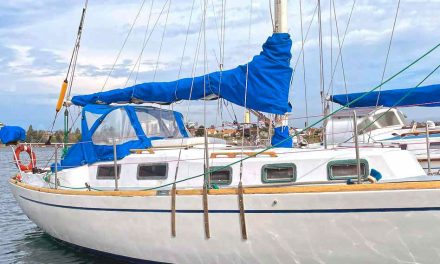Rings made from sections of pipe provide an easy way to hang gear
Issue 151: July/Aug 2023

The author drilled holes into the pipe before cutting it, using a piece of wood with a 90-degree groove cut into one side to stabilize the pipe.

John initially used 1-inch PVC pipe to make the rings, later switching to aluminum pipe to hold heavier items.
On most of our good old boats, storage in the forepeak and cockpit lockers is less than perfect. There is not quite enough room for everything. The lockers are typically triangular- shaped and gear falls to the bottom, particularly those things needed frequently or urgently.
A common solution is to hang things up. This can be done with hooks (see “Hanging Around” by Drew Frye in the May/June 2023 issue) or something similar on the bulkheads, but along the hull side, it is more challenging. Fastenings are obviously out, and the curve of the hull makes attaching a board to support hooks difficult. I have had varied success bonding things to the hull side with adhesives.
One day while installing an anchor windlass, I spent some time folded up in my forepeak. Looking around, I noticed that some of the ¼-inch stanchion and hull-todeck fasteners were longer than necessary, probably to ease manufacturing. This gave me an idea. Why not utilize these as a quick and easy way to hang dock lines, fenders, and other gear along the hull side?
To do that, I needed some threaded rings. I took some 1-inch PVC pipe and cut it into ½-inch lengths. I drilled and tapped these on one side and threaded them onto the end of the bolts protruding from the deck edge. After doing a couple, I realized it would be easier to drill and tap a length of pipe, then cut it into sections. But drilling the curved surface can be a slight problem. Using a drill point countersink greatly helped with starting the hole. A set of five of these bits is available on eBay for less than $10, shipped.

The rings are attached to overhead bolts at the deck edge and used to hang fender lines and docklines.
This gave me several inexpensive and secure rings on which to tie or hang gear. I later swapped some of the PVC rings for 1-inch aluminum Schedule 40 pipe, which is stronger for heavier items.
Now my docklines and fenders hang easily, and other things can take their place at the bottom of the locker.
John Churchill grew up a boatcrazy kid in Indiana. He built a raft at age 6, sailed Snipes as a teenager, and worked his way toward salt water and bigger boats. He has sailed a Cape Dory 26 singlehanded to Bermuda and back, and a Bristol Channel Cutter transatlantic with his father. Now in Florida, John sails Nurdle, a Bristol 35.5 (and former repo) that he’s rehabbing for extended post-retirement cruising.
Thank you to Sailrite Enterprises, Inc., for providing free access to back issues of Good Old Boat through intellectual property rights. Sailrite.com





